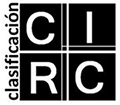Créditos
estudioshumanisticosfilologia@unileon.es
ISSN: 0213-1382
ISSN digital: 2444-023X
DOI: 10.18002/ehf
Submissions
Submission Preparation Checklist
As part of the submission process, authors are required to check off their submission's compliance with all of the following items, and submissions may be returned to authors that do not adhere to these guidelines.- Web addresses have been added for bibliographical references when possible or DOIs in case there is one
- The text takes into account the use of inclusive and non sexist language
- Articles with more than one author must specify the order of authorship and the individual contribution of each person in the published work.
Monográfico. Literatura, industria y medio ambiente: estudios ecocríticos
Artículos revisados por pares, cada número presenta su propia sección monográficaReseñas
Reseñas de libros sin revisión por paresMonográfico. La competencia pragmática y sociocultural en el aula de E/LE
Revisión externa por pares de los artículos seleccionados
Monográfico sobre el teatro español del cambio de siglo (1990-2015)
Invitación a los especialistas que deseen aportar artículos o notas al monográfico del número 38 (2016) sobre cualquier aspecto del teatro español del siglo XX que se considere interesante.Monográfico 2017: Crímenes contra la Humanidad en la literatura y el cine
Normas de publicación de la revistaMonográfico 2018. Construcción del discurso y pragmática histórica en español (fenómenos, secuencias textuales y tipos)
procesos diacrónicos que permiten explicar cómo han ido transformándose y fijándose distintas estructuras y formas lingüísticas en situaciones comunicativas concretas y con propósitos comunicativos específicos, todo ello en relación con el análisis histórico de las convenciones que se van consolidando en la construcción de los distintos discursos en español.Monográfico 2019-Representaciones del legendario hispánico del siglo XIX
El siglo XIX es, como ninguna otra época, el gran momento de recuperación y transformación cultural de los materiales folklóricos. En este momento, la leyenda literaria es acuñada como un nuevo género literario por los poetas y narradores, quienes, sobre la base de una tradición previa histórica, religiosa o popular, y el modelo de la predilección de los poetas y comediógrafos de los siglos de Oro, elaboraron flexibles composiciones no sujetas a reglas retóricas o poéticas, tanto en verso como en prosa.
Por ello proponemos recoger artículos que avancen en el estudio de esta temática. Las líneas que proponemos para las colaboraciones son:
-La investigación sobre el canon del género. No faltan reflexiones sobre lo que puede ser adecuado o no para una leyenda, qué tipo de argumento le conviene y qué tonalidad.
-La investigación acerca de los patrones narrativos, que pueden ser intercambiados en diferentes leyendas, y aplicados según la circunstancia.
-La leyenda en ámbitos del discurso (discurso citado, etc.).
-La reflexión sobre las complejas relaciones entre cristianos y musulmanes, de hostilidad, de respeto y admiración mutua, de intolerancia religiosa, la caracterización de los personajes más conocidos (Mudarra, Abdalá, Almanzor, Mauregato, Boabdil, Abderramán, Alakem, Aben Humeya, Aben Aboo, Zaida).
-El catálogo de los personajes que poblaron la imaginación romántica.
-La lectura del pasado que ofrecen estos textos a la luz de la contemporaneidad de los que escriben.
-La relación con la narrativa de viajes (descripciones históricas, artísticas...).
-La investigación sobre la migración de las leyendas hacia otros géneros (novela, teatro, zarzuela, ópera, cuento infantil).
La recepción de los artículos está abierta hasta el 01/08/2019.
-
Monográfico 2023: La Literatura Gótica desde la Literatura Comparada
Los artículos serán evaluados por pares ciegos, siguiendo la política general de la revista. Un tercer revisor que puede tratarse del propio editor de sección actuará de árbitro en caso de disputa entre los revisones o un revisor con autores.
Copyright Notice
Authors who publish in this journal agree to the following terms:
1. Authors retain the copyright of their work and grant non-exclusive exploitation rights (reproduction, distribution, public communication, transformation) to the University of León, whereby they may separately establish additional agreements for the non-exclusive distribution of the version of the work published in the journal (e.g., hosting it in an institutional repository or publishing it in a book), with an acknowledgment of its initial publication in this journal.
2. This work is licensed under a Creative Commons Attribution-NonCommercial-ShareAlike 4.0 International License. An informative version and the legal text of the license can be found here.
3. Authors are permitted and encouraged to electronically disseminate pre-print (version before being evaluated) and/or post-print (version evaluated and accepted for publication) versions of their work prior to publication, as it favors its earlier circulation and dissemination and thus a possible increase in its citation and reach among the academic community.
Privacy Statement
The University of León is responsible for the personal data provided for the journals it produces, edits and publishes. The only personal details gathered will be those necessary for the management of the journals, access to the portals and user identification. The data gathered will be limited to the content strictly necessary for the purposes above mentioned. Users themselves will provide consent by accepting to register and access the journals. Their data will not be transferred to third parties, except by legal imperative and never without authorization. For further information on data protection, please check the Privacy Policy and Legal Advice from the University of León where rights of access, exemptions, rectification, opposition, limitation and portability may be located by means of the established channels. Further information may be provided by the delegate of data protection at dpd@unileon.es.










